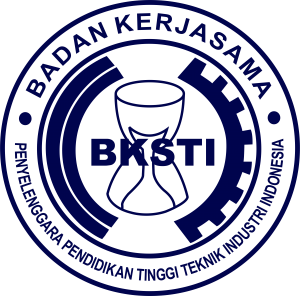Analisis Nilai Guna dan Efektifitas Faktor Produksi Fibers Polyester di PT. QRS melalui Perbandingan Hasil Aktual dan Perhitungan
DOI:
https://doi.org/10.37090/indstrk.v8i4.1485Abstract
In the industrial era 4.0, most of the production processes use automatic machines. However, not a few companies still carry out their production processes manually, for this reason it is necessary to carry out an analysis of the value of effectiveness and efficiency between the workforce and also the machines so that production runs well 0020GHIn writing this data and information obtained through interviews, observation, and documentation. This research uses descriptive method using a quantitative approach. Effective capacity of labor 1515.2. Whereas the effective capacity of the extruder machine is 378.8, the labor factor has not yet shown the maximum figure because it has not reached 100%. This can be seen from the average efficiency which only reaches 25%, while the efficiency of using extruder machines is maximized with the results of calculating an average efficiency of 100% per month, suggestions that explain the efficiency of the use of labor and machines. The results of the author's research at PT. QRS revealed that the condition of the low level of efficiency in the labor factor needs to be reviewed regarding the operation of the extruder machine which is still manual for the input of production raw materials. The efficiency of using the extruder machine at PT.QRS is already very good, it's just a matter of maintaining it.
Keywords: Effectiveness and efficiency, production factors, Polyester fiber.
Downloads
References
Baroto, T. (2002). Perencanaan dan pengendalian produksi. Jakarta: Ghalia Indonesia.
Buffa Elwood S, R. K. (2006). Manajemen Operasi dan Produksi Modern, Edisi Kedelapan Jilid 2, Diterjemahkan oleh Agus Maulana. Jakarta: Binarupa Aksara.
Busro, M. (2018). Teori-Teori Manajemen Sumber Daya Manusia. Jakarta: Prenadameidia Group.
Hambalik. (2001). Proses Belajar Mengajar. Jakarta: PT.Bumi Aksara.
Hani, H. T. (1986). Manajemen Edisi 2. Yogyakarta: BEFE.
Heizer, J. a. (2015). Manajemen Keberlangsungan dan rantai pasokan. Dalam Manajemen Operasi, Edisi 11. Jakarta: Salemba Empat.
Iskandar, I. R. (2011). AUDIT OPERASIONAL MENINGKATKAN EFISIENSI SERTA EFEKTIVITAS PRODUKSI, (Sebuah Studi pada PT.Budi Acid Jaya). Jurnal Akuntansi & Keuangan, 79-98.
Novela Irene Karly Massie, D. P. (2018). ANALISIS PENGENDALIAN BIAYA PRODUKSI UNTUK MENILAI EFISIENSI DAN EFEKTIVITAS BIAYA PRODUKSI . Jurnal Riset Akuntansi, 355-364.
Novia Setya Ningrum, A. M. (2016). ANALISIS EFISIENSI DAN EFEKTIVITAS PERFORMASI LINE MACHINING PROPELLER SHAFT UNTUK PRODUK FLANGE MENGGUNAKAN METODE OVERALL EQUIPMENT EFFECTIVENESS (OEE), (STUDI KASUS DI PT HINO MOTORS MANUFACTURING INDONESIA). Jurnal OPSI, 109-118.
Nur Rahmanti, H. M. (2022). PENERAPAN PERANCANGAN PRODUKSI UNTUK MENINGKATKAN EFISIENSI DAN EFEKTIVITAS PRODUKSI DI ERA NEW NORMAL PADA HOME INDUSTRY AR BAKERY NGANJUK. GEMILSNG: Jurnal Manajmen Akuntansi, 46-68.
Prasetya, H. d. (2009). Manajemen Operasi. Jakarta: Buku Kita.
Rahmad, P. S. (2012). Penerapan Overall Equipment Effectiveness (OEE) dalam implementasi Total Productive Maintenance (TPM), (Studi kasus di Pabrik Gula PT.Y). Jurnal Rekayasa Mesin, 431-437.
Reksohadiprojo, S. (2000). Dasar-dasar Manajemen. Yogyakarta: BPFE.
Tanjung, M. S. (2003). Manajemen Operasi. Jakarta: Grasindo.
Zulian, Y. (2011). Manajemen Produksi dan Operasi (Edisi Pertama). Yogyakarta: Ekonisia.
Downloads
Published
Issue
Section
License

This work is licensed under a Creative Commons Attribution-ShareAlike 4.0 International License.









